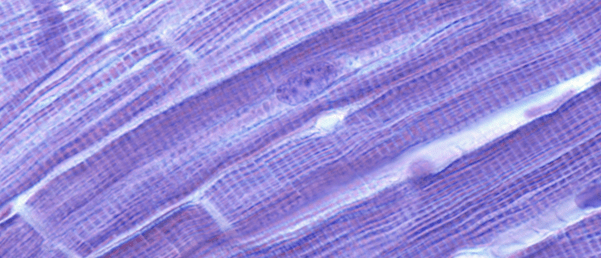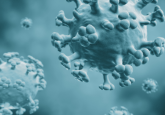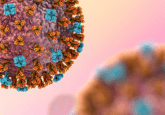Cryo-EM reveals an amyloid protein structure associated with a rare disease

Refer a colleague
Solving the structure of an amyloid protein gives new insight into limb-girdle muscular dystrophy type 3 (LGMD D3) and functional protein aggregation.
LGMD D3 is a rare disease characterized by slow progressive proximal muscle weakness caused by point mutations in the hnRNPDL-2 protein. This protein forms amyloid structures, which researchers at Universitat Autònoma de Barcelona (Spain) have characterized using cryo-EM, advancing our understanding of the implications of amyloid structures in health and disease.
hnRNPDL-2 is an RNA-associated ribonucleoprotein, a group of proteins that can form amyloid structures. Amyloid structures are associated with diseases including Parkinson’s and Alzheimer’s, examples of when protein aggregation is pathological; however, amyloids can also have functional purposes. Few functional amyloids in humans have been described to date.
The researchers used cryo-EM to study the amyloid fibers formed by hnRNPDL-2, which indicated that they are non-toxic and bind nucleic acids in their aggregated state. The structure of the protein results in a highly hydrophilic nucleus, unlike many pathological amyloid proteins, and includes the amino acid associated with LGMD D3. In this case, amyloid formation is not toxic.
This is the first time that a human functional amyloid formed by the complete hnRNPDL-2 protein was observed using cryo-EM, as previously only structures formed by protein fragments had been studied.
 Blocking TRPC6 could lead to novel Duchenne muscular dystrophy treatment
Blocking TRPC6 could lead to novel Duchenne muscular dystrophy treatment
Blocking a certain type of ion channel has been shown to prolong survival in mouse models of severe Duchenne muscular dystrophy (DMD), which could lead to the development of novel treatments in humans.
“Our study challenges the hypothesis that the aggregation of this protein is the cause of the disease and proposes that it is the inability to form a fibrillar structure that has been selected by evolution to bind nucleic acids that causes the pathology,” explained senior author Salvador Ventura, who led the research along with first author Javier Garcia-Pardo.
The researchers found that amyloid formation with hnRNPDL-2 is necessary for it to function correctly and suggest that LGMD D3 is a loss-of-function disease that arises due to the inability of the mutated protein to form amyloids.
In many neurodegenerative diseases, mutations cause soluble proteins to form aggregates, and therefore anti-aggregate molecules have been studied for potential therapies. “Now we know that this would be a mistake since it is the incorrect formation of the fiber that seems to trigger the disease; therefore, molecules that stabilize this structure or facilitate its formation would be more appropriate,” commented Ventura.
Until now, mainly pathological amyloids have been characterized. The research group is going to continue utilizing cryo-EM to solve the fibral states of other functional amyloids to understand how mutations can affect their properties and find out the reasons RNA-associated ribonucleoproteins are linked to certain diseases.
Please enter your username and password below, if you are not yet a member of BioTechniques remember you can register for free.





